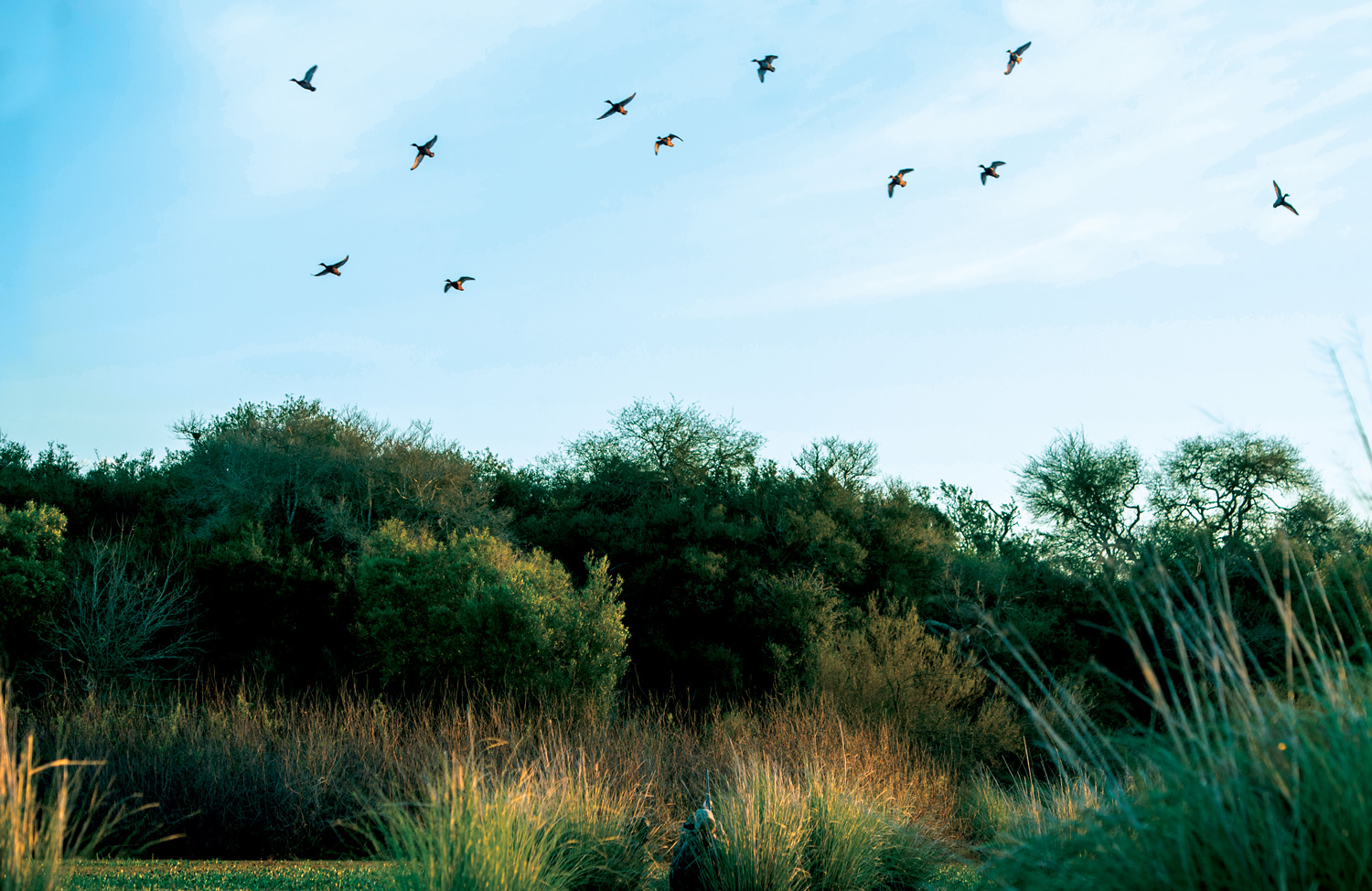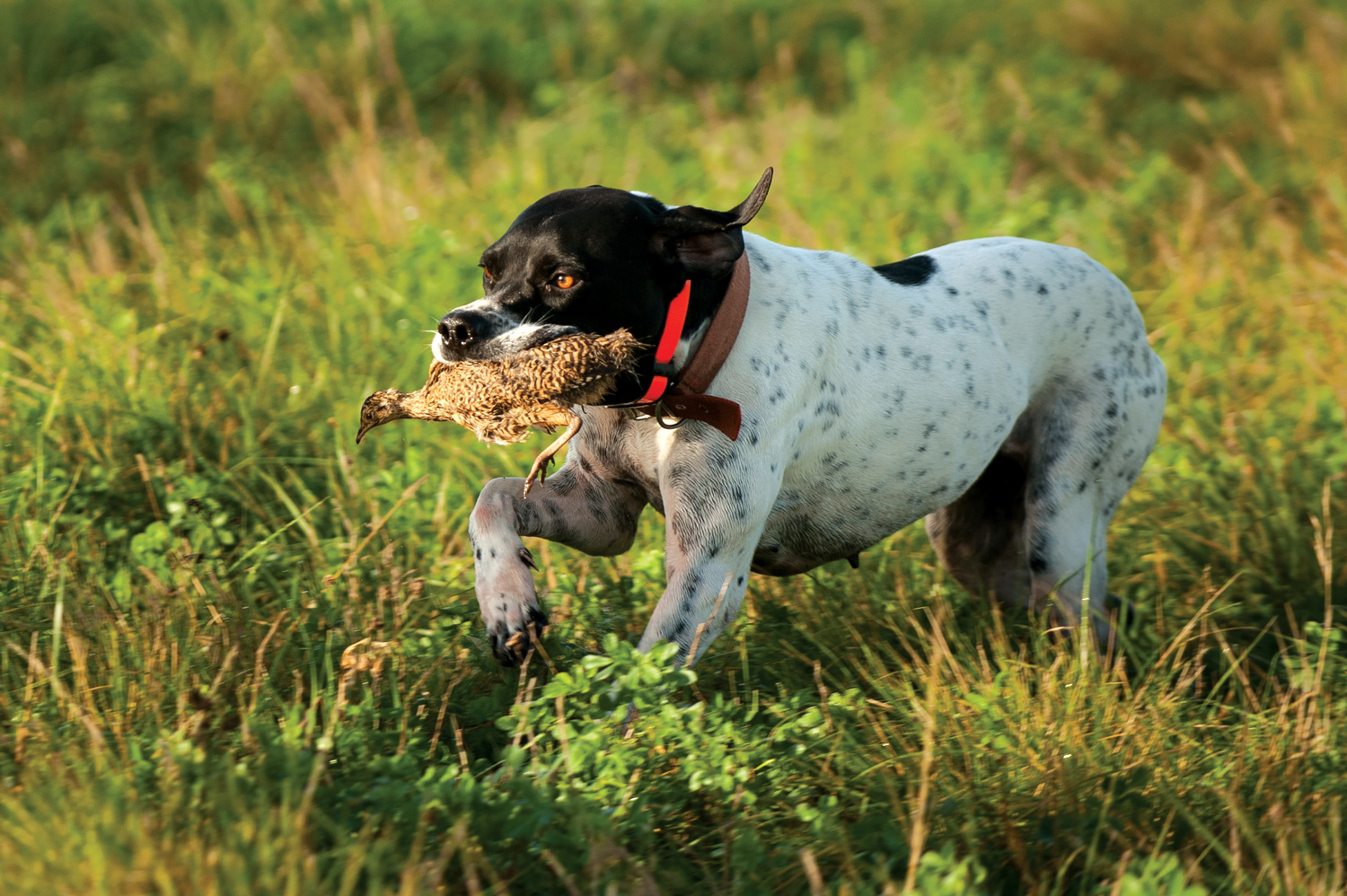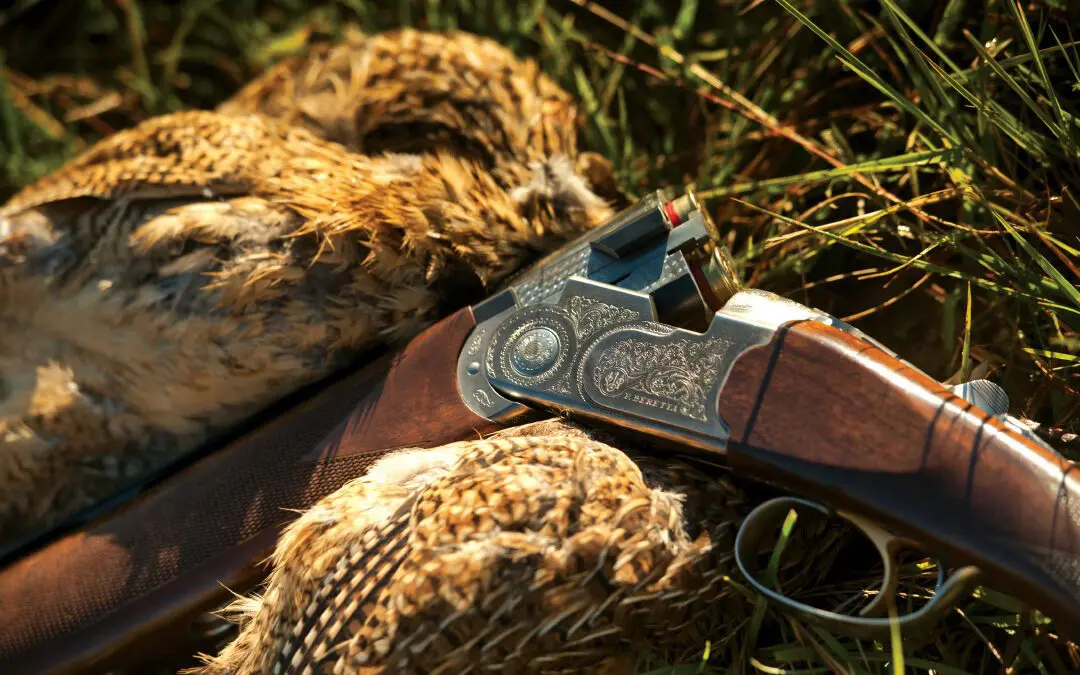I think I know what Otis Redding had on his mind when he crooned “Sittin’ on the dock of a bay.” Only there’s no dock here. There’s no bay either, but I’m sitting on a high bluff overlooking the Parana River in Argentina, takin’ the rest of the day off.
Mi amigos have divided themselves into two groups. One bunch went to hunt doves. The other went to the river to fish for freshwater dorado.
The lodge at Estancia Cortaderas is directly behind me, and right across the channel there’s a whole wad of islands, broken by a maze of sloughs and meandering small channels. Several miles away, the Parana shoulders its way into open water again. In the mornings and evenings there are more ducks than you can ever imagine.

As for me, I shot so much that I needed a break, so I’m just sittin’ on the bank of the Parana, letting the time roll away. It’s late July, mid-winter in Argentina. There’s just a trace of breeze, and the mid-afternoon temperature must be 60 or so. A hazy sun is peeking through, and the winter sunlight is all scrambled by ripples on the river.
It was chilly this morning when Robert Maclenagen and I took our 15-bird limits of perdiz in a half-hour. Yesterday we shot doves until we tired of it, and Roberto put away his gun in favor of a bow. He didn’t have much luck shooting doves with a bow, and I didn’t get my hoped-for photos of the feat, but we weren’t really looking for any kind of success. Success meant just being here – just seeing this phenomenal place called Argentina.
The day before, Robert and Mark and Bubba and Rodney and Chris shot over a freshly cut cornfield while I stood near a waterhole just around the hill. As expected, they got a few more pigeons, but I got an eight-duck bonus.
The morning before that, we ganged up on ducks on the river and shot until our arms nearly fell off. And there were many more to come. Every afternoon we shot doves until we just didn’t want to shoot any more. Then, we’d just sit and watch the birds fly till dark.

For most hunters, the main draw in Argentina is high-volume dove shooting. They were certainly the main event for us in the afternoon. Once we were settled, they came in waves. Clouds. Legions. Use any name you want to describe impossible numbers!
We’d set up with a “bird boy” and a couple of cases of shells and do our best to repel the invaders until we were sated. The doves came in such numbers that it became impossible to pick a single target. I finally solved the problem by picking a small section of sky and only shooting at birds that entered that sector.
One day we worked a field that the other guys, who had been there before, called ”Stevie Wonder” because they figured even he could shoot a thousand birds there. I was stationed facing the front of a huge section of bush, with a field of cut corn to my back. I gave it my best effort, but the doves won!

Whether you’re gunning perdiz with pointing dogs or heading off to shoot ducks over decoys, Entre Rios Province is home to spectacular numbers of waterfowl and gamebirds.
The whole thing was a continuation of the great adventure that High Adventure Company CEO John Burrell and I had dreamed up at the SCI show months earlier. Part one, titled “California Dreaming,” appeared in the March-April issue. That trip was already in the books when this one began. A short flight took us back to Buenos Aires, where we overnighted before another short charter into Entre Rios Province brought us to Estancia Cortaderas on this bluff a couple of hundred feet above the Parana.
This region of Argentina comprises hundreds of thousands of square miles of farmland, liberally laced with streams and rivers. And every acre of untilled land is choked with impenetrable algarrobo, a thick, tough, low-growing bush that provides perfect cover for the multitude of bird species that live here. Because of the sheltering brush, doves and other birds are free to multiply, safe from predators and bad weather. That, coupled with limited pressure from local hunters and natural predators, allows a proliferation of birds that is rare in the world. Even with foreign hunters flocking to Argentina to shoot, the bird population continues to grow.
I’m a quality over quantity kinda guy, so my approach to the hunt was different. I wanted to get a taste of the high-volume shooting that Argentina is justly famous for, but I also wanted to see what else the country had to offer. And I got to see it!
What’s remarkable about Cortaderas is its variety of opportunities for wingshooters. I experienced everything that I wanted, and it was all incredible. My biggest surprise, however, came when I hunted perdiz for the first time.

The perdiz is one of the world’s most underrated gamebirds, says the author, especially when you hunt them behind well-trained pointing dogs.
The perdiz has to be one of the most underrated gamebirds in the world. It’s a medium-size bird with a long beak and mottled brown-and-dun coloring slightly reminiscent of a quail or grouse. They’re good flyers, though not as hard to hit as a grouse, and they hold really well for pointing dogs. Their native habitat is low, green cover that barely reaches above a hunter’s ankles.
To really understand perdiz, you have to imagine gunning quail without the briars or hunting chukars without the rocky, lung-numbing, knee-busting climbs! Distill just the sweetness of your very favorite gamebird, throw away all of the pain, and you have the beautiful, obliging perdiz. Just put out a pointer, hang your favorite double in the crook of your arm and enjoy.
My last hunt for perdiz was one of those clear, cool mornings that you imagine when you daydream of bird hunting. The winter sun slanted sideways to the ground and there was just a trace of a breeze. Puffy white clouds drifted slowly by, and it was just cool enough to enjoy a light sweater.
Chris and I drove a few miles, down the blacktop and turned off onto a sandy road that ended in a large field that appeared to contain about 300 acres of lush green growth that looked a lot like young alfalfa. We stopped, bailed out into the roadside ditch and put down a pretty little shorthair named Gina. She immediately started working the fence-line and pointed before we could even load our guns.
We scrambled to load up and when we walked into the flush, a single bird caught the wind and hooked right. Chris dumped him easily. At the shot, another bird jumped about 30 yards out front and Chris dropped him as well. It was a great way to start the day and an omen for one of the sweetest days that either of us will ever remember.
We took our time working around the perimeter of the field, not hunting so much as going through the motions, enjoying the company and just soaking in the last morning. Like every true gundog in the world, beautiful black-and-white Gina had other plans and was finding birds and pointing every few yards. As was her habit, she would freeze when she got a wisp of scent, and then sort of crouch-creep forward until she was certain that her nose was crowding the plump round butt of the bird.
Of course, we couldn’t fail to honor her efforts with a salute, and as the sun rose we continued to pick up birds every few minutes. Both of us were shooting well, and I don’t think either one of us missed more than a couple of birds. It was one of those mornings when everything seems to be right with the world and we had it all to ourselves.
When we finished working the big field, we were still a few birds short of a limit, so we decided to check out the adjoining pasture, which we were certain harbored a few of the escapees from our earlier shooting. Although the stubble in the field was only a couple of inches high, and it looked as barren as a moonscape, we each managed scratch down a couple more perdiz, just two birds short of our limit.

Situated on a bluff overlooking the Parana River, Estancia Cortaderas offers meals and accommodations that are seldom equaled and never excelled.
We were only a hundred yards from the truck when Gina slid to a stop and crept forward in the middle of the field, and when we walked forward a bird jumped about 30 or 35 yards out on Chris’ side. He dumped it with as nice a shot as I’ve ever seen. Just like our first flush of the day, another bird flushed at the shot. This one, however, got up behind us about 40 yards out and arced toward the cover on my side of the field. The shot was really too far, but I couldn’t resist a chance to fill out my limit, and to my surprise the bird tumbled head over heels.
In retrospect, my Argentina experience was different than I imagined it. And it will probably be different for you, too. It’s about more than just volume. It’s a phenomenon. For me, there were so many birds that my need to hunt was totally satiated, and I was overcome by the simple awe of it all. I’ve always wished that I could have seen North America before the human population went out of control . . . to see flocks of passenger pigeons that blocked out the sky and rafts of wintering waterfowl that stretched for miles on end.

The hunters paid a visit to Santa Cecilia’s children’s home, where they brought presents of clothing, school supplies and toys to the orphans.
What does the future hold for Argentina? I would not be so presumptuous as to even speculate. I just know that it’s there now, and it’s amazing and it’s one of those things that you just have to see and do, simply because it’s there and it would be a shame to miss it.
As for the Estancia Cortaderas, there are none better. Like best quality guns, lodges sometimes achieve a degree of excellence that entitles them to use the term. Like best-quality guns, they are seldom equaled and never excelled. Cortaderas is firmly in that class.
IF YOU WANT TO GO
Dove-shooting is excellent year-round at Cortaderas, with May through August best for hunting ducks and perdiz. Call High Adventure Company at (800) 847-0834 or visit Highadventurecompany.com.

